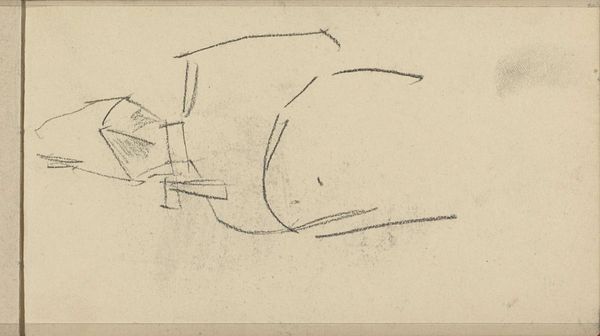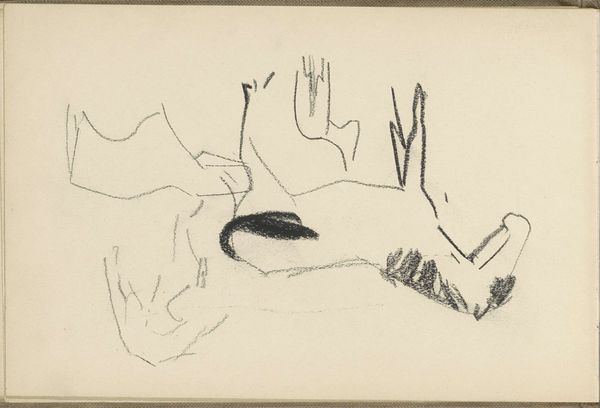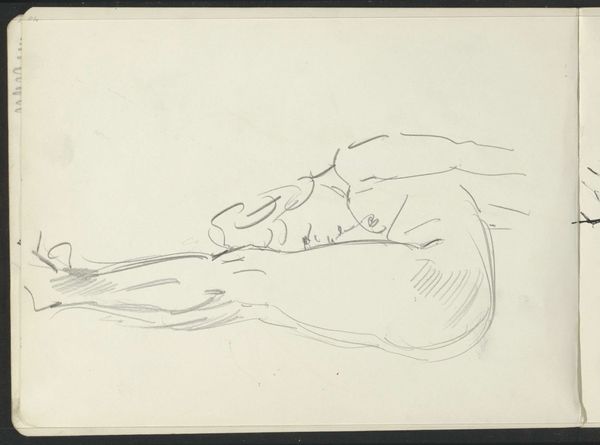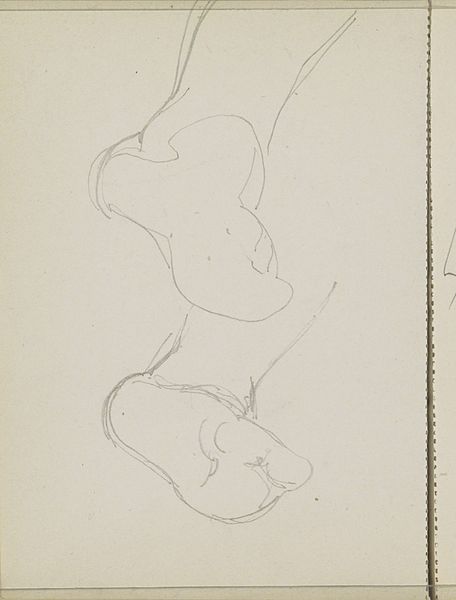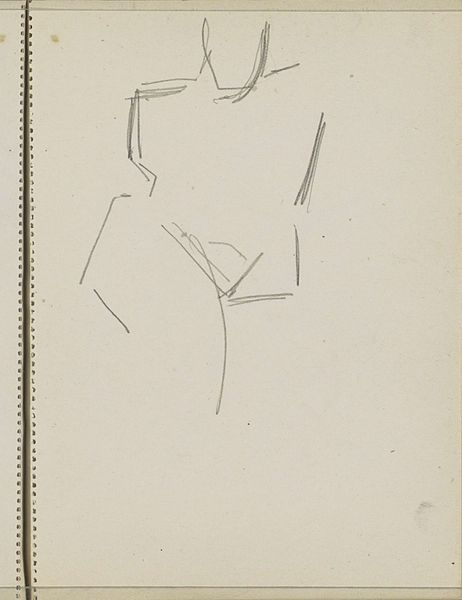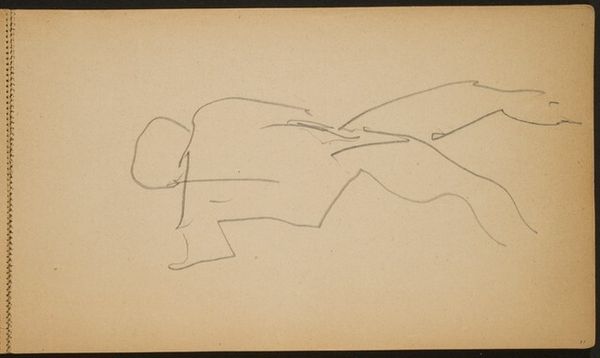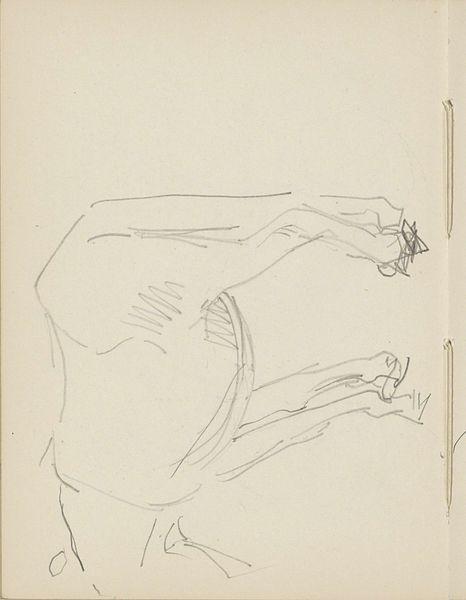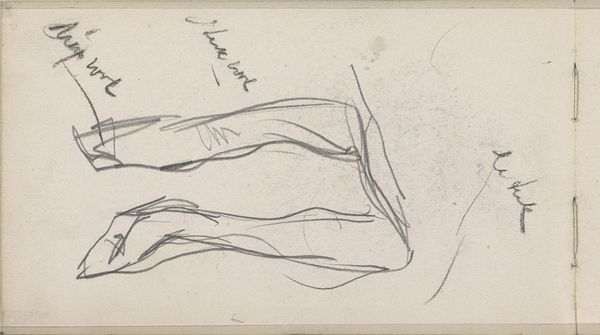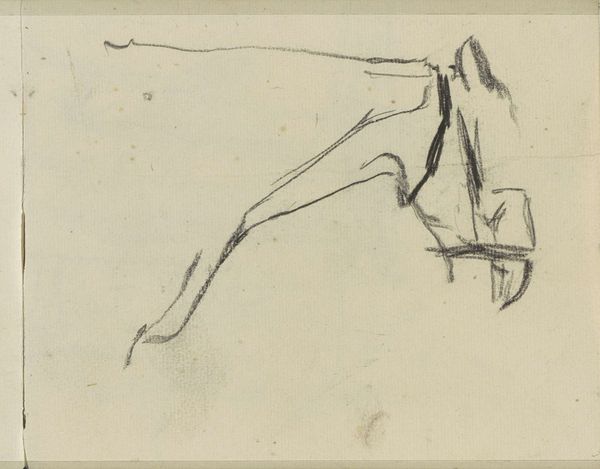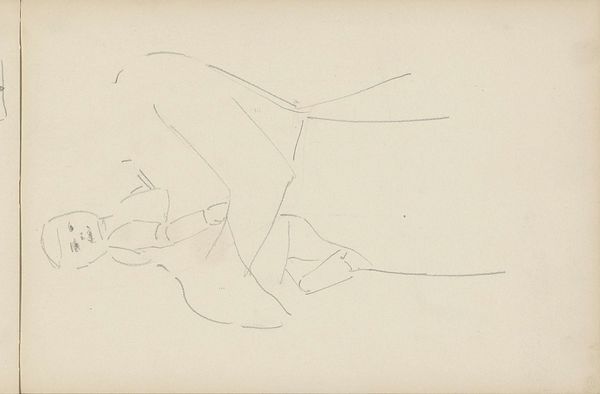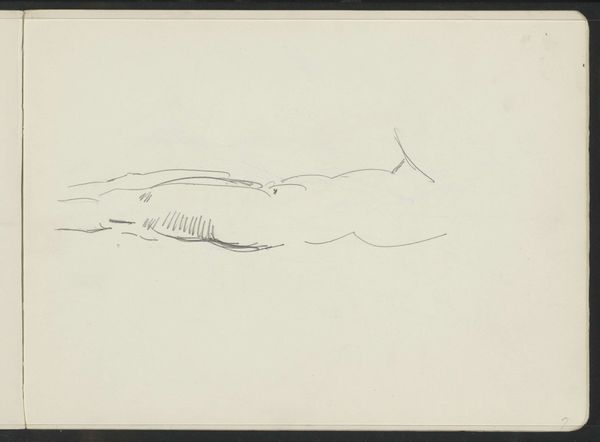
#
amateur sketch
#
light pencil work
#
pen sketch
#
hand drawn type
#
personal sketchbook
#
idea generation sketch
#
ink drawing experimentation
#
pen-ink sketch
#
sketchbook drawing
#
initial sketch
Copyright: Rijks Museum: Open Domain
Curator: At first glance, this drawing, "Koe," which translates to "Cow" in English, seems remarkably sparse. Created circa 1905 by Carel Adolph Lion Cachet, it's a study rendered in light pencil strokes, housed in the Rijksmuseum. Editor: It's the kind of image that begs the question: is this unfinished, or is this the complete idea? It gives the feeling of capturing a fleeting moment, the very essence of 'cowness' in a few lines. The cow isn't presented, she is only implied, just like the memory of a passing cow. Curator: Precisely! Cachet was known for his graphic design work, including his work with lettering. This sketch provides insight into the process of designing imagery—reducing a form to its barest visual essence for symbolic impact. It demonstrates what could have served as a study or a foundation for a logo or illustration. Editor: Seeing these preliminary explorations fascinates me because it lifts the curtain on the art-making process. We often only encounter polished outcomes; we are looking here into the artist’s thought process, watching him strip a figure down to almost calligraphic components, seeing something primal, in an agrarian sense, revealed through a modern sensibility. How does this sketch reflect the socio-political factors during the turn of the 20th century? Curator: Cachet came of age during a time when new printing technologies and distribution models emerged. This changed the relationship to authorship. Artists began making commercial applications of what once belonged to the realm of 'high art.' Artists grappled with the intersection of art, branding, and everyday life. Such forms became highly visible, suggesting the public and social role that the artist plays within a rapidly industrializing society. Editor: So, is this image as a prototype, for what he feels like is becoming an artistic problem, to simplify something down into its simplest symbol. The cow becomes reduced to just an indication, so it can function as an indication, for an agricultural idea, or just the feeling of “pastoral farm-y feeling”? Curator: Perhaps it reflects the broader search for authenticity, a desire to reconnect with a pre-industrialized past in a way, through stylized natural imagery stripped down to only the elements. The sketch preserves Cachet’s intention. It presents the tension that the artist experienced between individual expression and designing accessible visual elements that became embedded in our collective culture. Editor: Viewing the sketch gives insight into what can become widely accessible: even the simplest of artistic gestures can be culturally lasting. Curator: Yes, something gestural and fleeting holds enduring cultural power.
Comments
No comments
Be the first to comment and join the conversation on the ultimate creative platform.
